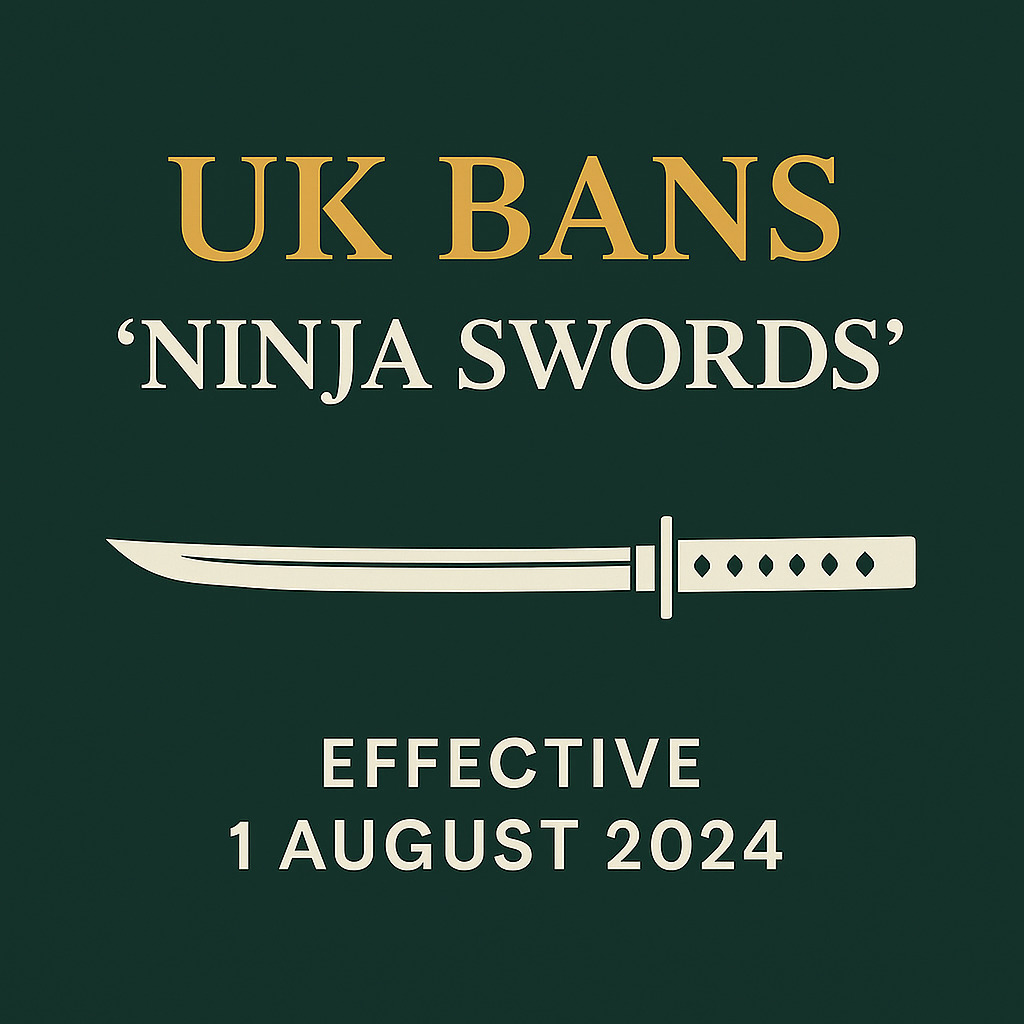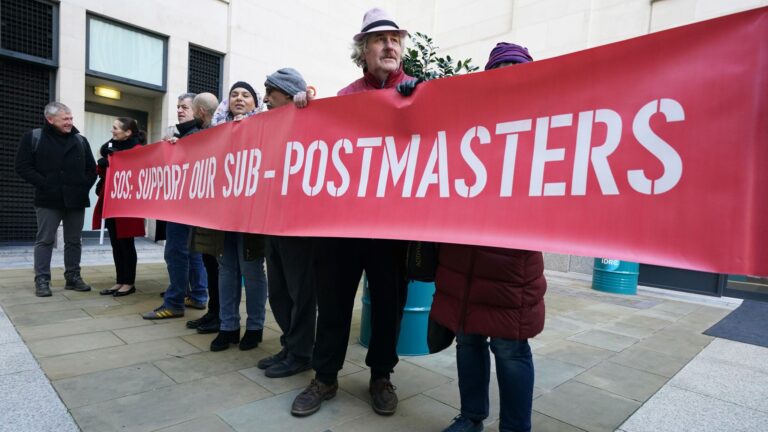UK Bans “Ninja Swords”: Symbolic Gesture or Missed Opportunity?
UK Bans “Ninja Swords” – Safety Step or Symbolic Measure?
Effective from: 1 August 2025 (England & Wales)
What Is a “Ninja Sword”?
Under the Offensive Weapons Act implementation known as “Ronan’s Law,” a ninja sword is legally defined as a straight-edged blade between 14 inches (≈35 cm) and 24 inches (≈60 cm), typically with a single cutting edge and a tanto-style point. Possession, sale, import, or manufacture is now illegal.
Key Provisions of the Ban
- From 1 August 2025, it is now specifically illegal to possess, sell, import, or manufacture “ninja swords” even in private homes.
- Carrying one in public was already illegal under existing legislation, which banned possession of any blade without good reason.
- July saw an amnesty and surrender period, during which over 1,000 weapons were handed in.
The UK already has some of the strictest knife and weapons laws in the world. Carrying knives, swords, or any pointed blade in public without a valid reason has long been banned. In that sense, this new legislation does not introduce an entirely new restriction, but extends the list of specifically banned weapons to include certain privately held straight-edged blades. Critics argue it is largely symbolic and unlikely to affect real-world crime trends.
Voices on Twitter/X
> “If ninja swords were causing most crime, Japan would be worse than the UK. It’s not the sword, it’s the social problems.” > @Geiger_Capital
> “UK is banning swords now—just wait for nunchucks next!” > @benshapiro
Why the Ban Was Introduced
The law responds to the murder of 16-year-old Ronan Kanda in 2022, who was fatally stabbed at a children’s event with a 22-inch ninja sword. His mother’s campaign, “Ronan’s Law,” pushed legislation seen by supporters as necessary to ban weapons directly linked to such deaths.
Knowledge Box: What You Should Know
Facts to Remember:
- Knife offences rose by 87% over the past decade 50,973 offences were recorded in the year to June 2024.
- After a 1997 handgun ban in Great Britain, crimes involving handguns increased from ~2,648 (1997/98) to ~3,685 (1999/2000).
- Firearm offences remain low 6,233 offences in year to Sept 2023 but have risen ~21% over the decade.
Supporters’ Perspective
Proponents argue the law is a focused response to a weapon used in a particularly tragic case. The surrender amnesty, enhanced sentencing, and stricter online sales rules are seen as necessary steps to reinforce deterrence and public safety. It is part of a broader strategy including age checks on online knife sales and tougher rules for social media firms promoting weapons.
Critics Say Bans Don’t Stop Violence
Opponents of the ban argue that it duplicates existing restrictions. Since carrying any kind of ninja sword in public was already illegal, they suggest the move is more political than practical. The law’s targeting of a niche weapon is seen by some as an emotional but ineffective response to deeper problems.
Historical data adds to the scepticism. Following the 1997 handgun ban, gun crime rose sharply. Likewise, despite years of escalating knife restrictions, knife crime has continued to rise across the UK. Critics warn that criminal behaviour shifts to new methods or weapons and that prohibition doesn’t eliminate violence, it often just changes its form.
Concerns have also been raised about the unintended consequences for legitimate collectors, martial artists, or theatrical productions. Many argue for a broader focus on addressing root causes of violence: youth disengagement, illegal trafficking networks, and mental health support.
Does Banning Work or Distract?
The ban is deeply symbolic responding to a mother’s grief and sending a message of zero tolerance. But when knife offences are rising, many ask whether symbolic measures offset systemic failures.
If criminals shift to other weapons, or if enforcement is uneven, the legal availability of ninja swords becomes less relevant to actual crime statistics.
Looking Ahead
- Next year, the full change in sentencing will take effect under the Crime and Policing Bill.
- Watch for enforcement trends and whether possession prosecutions increase.
- Critics may bring cases for review over vagueness or unintended consequences.
The ultimate test of this ban will be whether overall knife violence declines. Without structural change, history suggests tool bans risk being symbolic rather than substantive.
📰 Fidelis is free to read, but not free to produce.
☕ If this coverage matters to you, support us here:
👉 BuyMeACoffee.com/fidelisnews




